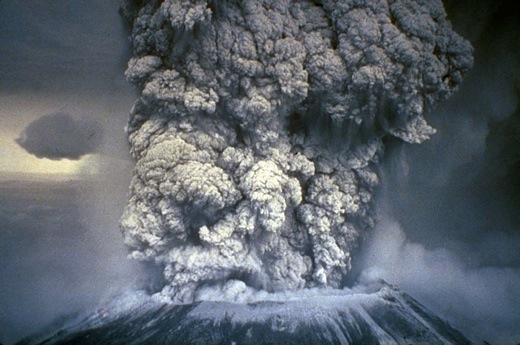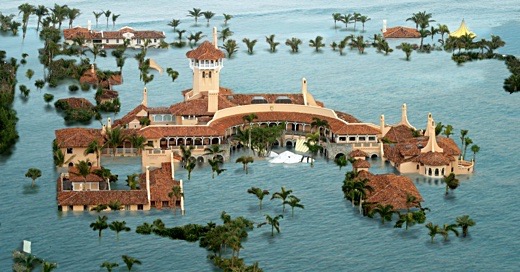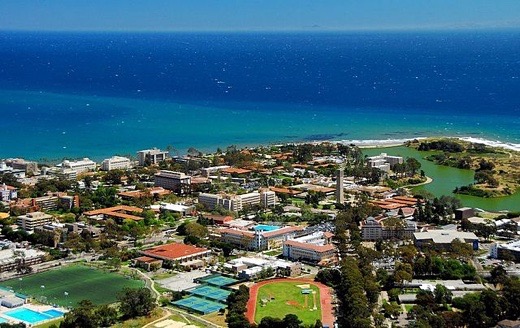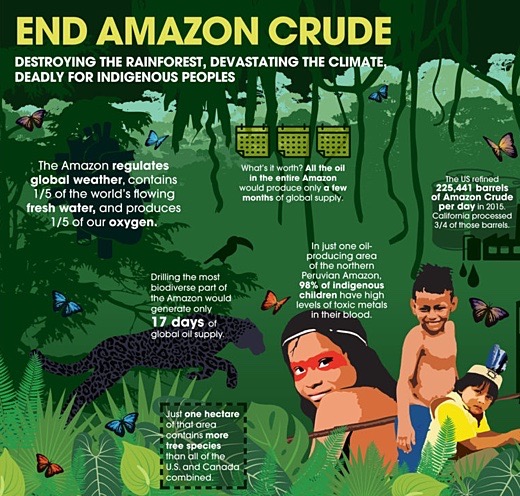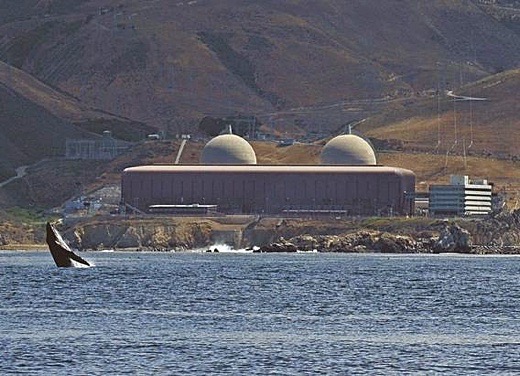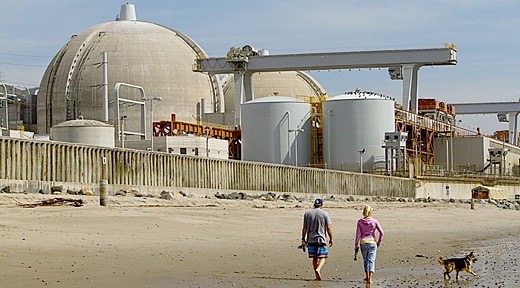SUBHEAD: The apocalypse of climate change is not going to come with a bang but with a whimper.
By Charlotte McGuin Freeman on 6 May 2017 for Dark Mountain -
(
http://dark-mountain.net/blog/dark-mountain-issue-11-clothesline-at-the-end-of-the-world/)
 Image above: Steel framed washing line with clothes blowing dry in sun and wind. From (http://lawoffashion.info/old-fashioned-washing-line-pole/).
Image above: Steel framed washing line with clothes blowing dry in sun and wind. From (http://lawoffashion.info/old-fashioned-washing-line-pole/).
On the first warmish March day, I’ll be outside hanging my wash on the line even if my boots are crunching on snow. If the sun is shining, if there’s even a hint of warmth on the breeze I’ll be bringing my wash outside, freeing it from the clotheslines in the basement.
I am a tiny bit fanatical about my clotheslines. The outdoor line is attached to my side yard fence and, like all people who engage in a repetitive physical task, I have a specific method for hanging the clothes. Pants, dresses, bathrobes – long items get hung on the back line against the fence.
Then shirts, which must be hung upside down, connected at the corners to save on clothespins. (If you hang them right side up by the shoulders, you get weird bumps dried into your shirts that make you look like you’re continually shrugging.)
Smalls get hung on the end furthest from the street, between the dresses and the shirts. No need to embarrass the neighbours. Then last are the socks – matched together, hung in pairs. A load of wash takes me maybe ten minutes to hang. I work at home so it makes for a nice break in the day, and I love my washline. I love the way things look hanging there in the breeze.
But I don’t hang clothes just because I like the way they look. I am a true believer in the power of the clothesline. For one thing, the clothes dryer is second in American homes only to the refrigerator for electricity consumption, and while I know that eliminating my use of the dryer individually isn’t going to slow the onslaught of climate change, it’s something concrete I can do. Also, as a freelancer,
I’m broke, so anything to bring down the electric bill.
But I hang laundry for a less concrete reason, because hanging the laundry is about taking care, it’s about a version of domesticity that is not oppression, but which models the sort of caretaking we’re all going to have to learn to value in order to make a hotter, drier, more crowded world habitable.
I live in a small town in Montana, a town that until about 20 years ago was solidly working class. It was the headquarters for the Northern Pacific Railway, and it’s a town of small railroaders’ houses with tiny yards, nearly every one of which has a sturdy clothesline out back.
Because we’re one of the windiest towns in America and these are serious clotheslines – usually built from six–inch plumbing pipe, sunk into three or four feet of concrete.
And yet, I’m one of the few people I know who actually dries my clothes on the line. As the cost of appliances dropped and dryers became ubiquitous, clotheslines came to be seen as ‘trashy’, a symbol of poverty and sloth.
Even as the new people moving to town buy hybrid vehicles and put solar panels on their roofs, even as greenhouses and chicken coops spring up in backyards, those sturdy old plumbing-pipe clotheslines, painted silver, are always empty.
I moved here from California in 2002 for a number of reasons, but chief among them I was anxious about climate change. It made me nervous, California. It had been good to me career-wise, twice.
First when I moved there to do my master’s degree at UC Davis; then when I left Salt Lake City after my PhD and went back out to live with my brother and find a job.
Desperate to pay off my student loans, I got work in a tech company, editing user and administration guides. I liked it. I liked the people I worked with and the intellectual challenge of figuring out how to present information to people in the most useful format possible. But California was giving me the willies.
It was so crowded, and the Bay Area is such an enclosed space, bounded by the Pacific on the one side and the coast hills and Sacramento-San Joaquin River Delta on the other.
Three years into my tech job, I’d seen field after field on my evening commute disappear under the onslaught of ugly housing developments, just as I’d watched the last few migrant workers hoeing a zucchini field that was doomed to become another Cisco campus.
I wish I’d had a camera that day. I was stopped in traffic, and across from me were several guys with computer cases standing at a bus stop, while behind them four or five Mexican guys hoed zucchini rows, and behind them another three–storey Cisco building, identical to all the others, was going up.
I could feel the big change coming – whatever we want to call it, climate change, global warming, the Anthropocene, the great acceleration – I don’t know what it is, but having been raised by unreliable parents you develop antennae for impending doom.
You can tell by the energy level, the degree of frantic vibration, that something bad is about to happen. And that’s how I felt in California. I couldn’t put a finger on it exactly, but I knew something wasn’t right and I wanted to get out of the way.
I knew about Livingston from having run writers’ workshops while I was in graduate school. The nature and western writers were a friendly lot, most knew one another, and talk across the patio tables at Squaw Valley often turned to places where a person could live cheap. Livingston was one of them.
Like a lot of beautiful places left empty when an industry implodes, Livingston has attracted writers and painters and fading movie stars for decades now, along with a vibrant population of hunting and fishing guides, building contractors and former cult members. It’s a creative bunch and, with the exception of the rich summer people who build trophy homes in the valleys that radiate out from town, it’s a place where no–one has ever had much money.
Most of us live in one- and two-storey houses on small lots in town. Old railroaders’ houses like the one I bought. Mine was built in 1903, and hadn’t had anything much done to it since they put the indoor plumbing in sometime in the forties.
It’s a small house on a town lot that I bought for a number of reasons, chief among them the five-foot clawfoot tub, and the well-used vegetable plot that took up half the back yard.
I was lucky enough to get to hang around Gary Snyder when I was at UC Davis, and Snyder’s advice to us wasn’t about poetry, well, not directly. Gary told us that if we wanted a creative life, we should find someplace cheap to live, where a person could afford to buy and pay off a house.
Cheap housing attracts artists, he said, so chances are you’d wind up with interesting neighbors, and if you had a place to live you wouldn’t have to go teach in places you didn’t want to be. You’d have your freedom.
And that’s what I was aiming for when I moved here. I’d been living with my brother for four years, a roommate arrangement that had worked out so well we thought we’d better break up before we wound up like one those pairs of spinster siblings you used to see sometimes out in the country near our grandmother’s farm. The ones in the white farmhouse they’d been raised in, still sleeping in their childhood bedrooms.
In the four years we’d lived together we’d both found better jobs and had repaired some of the anxiety we had about domestic life. We’d been raised in a world of unstable alcoholics, the kind who pick a fight whenever they’re feeling existentially itchy.
By teaming up, we’d figured we could practise domestic life on one another, see if we could figure out how to live in a house with another person you love without screaming fights or tears of recrimination. That we’d done it and had righted our little ships, both financially and emotionally, was a major accomplishment. But it was time to move on.
Time to take those skills and go find real partners. And so when my manager agreed to let me telecommute, I went looking for a house I could afford, and since I wasn’t tied to the Bay Area anymore, a house I could afford back in the Rocky Mountains I loved.
Pretty quickly, things fell into place and I found myself in possession of a mortgage and the keys to a small bungalow in Montana. I packed the cat and computer and boxes of books into my Honda, and arrived three days ahead of the moving van.
That I’d been able to not only buy a house, but could afford a moving van felt miraculous to me. We’d moved every 18 months or so growing up, renting U-Hauls or borrowing horse trailers.
Despite having managed to get a mortgage, purchase a house and arrange for a moving van, I still felt that first night, setting up the inflatable mattress in my empty house, that I’d broken in, that any moment someone was going to burst through the door and shout at me to leave.
The first year went pretty well. Patrick, my brother, wound up moving here after me, having been laid off from his job just as I was leaving California.
I got a dog, and built raised beds in the existing vegetable patch, and made friends. Patrick found a cheap apartment on the other side of town, took up with his first girlfriend in ages, and set about building himself a niche running events and helping with wedding planners, work he’d done since his teens.
We were settling in. At his birthday party in early September he made a sentimental speech to our new friends, thanking them for taking us into their lives, saying he’d never had such a happy year.
On 28 September that first year I lived here, on a beautiful, blue-sky, golden sunshine autumn day, I was in the hammock strung between my apple trees when the Assistant Coroner of Park County Montana walked through my front gate.
I got up to see what the dogs were barking about only to meet this big man, taking off his feed cap as he saw me, who put one enormous hand on my shoulder and said;
‘Ma’am. There’s no good way to say this. There was a car accident last night. Your brother is dead.’
Time stopped.
The world as I knew it ended that day, and while a new life has taken root, it is not at all the same. It is a replacement world.
Patrick dying was the one thing I had feared above all others. It was like being simultaneously orphaned and widowed.
Our divorced parents are unreliable at best, our youngest brother had died as a toddler, and we had survived it all together. We were less than two years apart, and in every photo I have of us, from earliest childhood until the end, one of us has an arm around the other.
I’d gone from the oldest of three, to being the big sister, to being an only child.
In losing Patrick, I lost the one person on this earth who loved me absolutely, whose faith in me was unshakeable. Without Patrick, it took me a very long time to piece together some kind of identity, and even now, 13 years later, it feels false, because he hasn’t been here to see it.
It was terrible, and I survived it in large part due to the tender ministrations of the town of Livingston. ‘If you’re going to have a disaster,’ I tell people when the story comes up, ‘you want to have it here. Everyone came, and they stayed.’
My house filled up that first night as word got out. They got me through a funeral, and saw that I was never left out. I had people to go to Happy Hour and dinner with on Fridays, and they took me in for holidays, and some, like my friend Jennifer, occasionally walked in my front door that first year or so and said ‘No really, how are you?’
My best friend had twins (after a terrifying pregnancy), so for a couple of years there was always a screaming baby to tend, and her two big girls needed an auntie as much as I needed kids to take care of. I was taken in by a tribe of people, people who became my new family, people who I love with all my heart. And yet.
When I say the world stopped, I mean that I have a very strange relationship to time now. There was my life until 2003, a life that hummed along and things changed and I moved from place to place and attended schools and published a novel and got a job and eventually moved to Montana. My story kept unfolding.
And then Patrick died, and it feels in some weird way like my story ended. However, I’m still here.
To compare my personal loss to the avalanche of loss that is heading our way as a planet would be unbelievably callow, and yet there are things you learn when you lose the person you thought you could not live without that seem germane.
For one thing, the surprise at still being alive. You have to figure out how to live in this diminished world. You have to figure out how to go on after the fourth, or seventh, or 15th time you pick up the phone to call the person who is no longer here.
Those first months after Patrick died, I remember thinking, ‘Forty years? Fifty years? I have to live like this for how long?’
The literature of climate change is mostly of the apocalyptic variety. There will be a disaster and then it will ALL END. But if there’s anything I have learned in these intervening years, it’s that it doesn’t end. You’re still here. The sun comes up.
The apple trees bloom in the spring, and the garden needs planting, and the children you love will keep growing and even, eventually, you might be lucky enough to meet someone who loves you and who doesn’t mind when you spend the first three or four years telling him stories about your dead brother, and who you love back even though you find it inconceivable that you’re spending your life with someone who didn’t know Patrick, and who Patrick will never know.
Apocalyptic stories are sexy in their drama. The end of the world as we know it will be big and dramatic and everything will change, and we will be living in some mythical landscape where we’ll be freed from all the boring conventional aspects of our daily lives. My instinct, however, is that this is not how things are going to unfold.
More likely it’ll entail the slow chipping away of things we’re accustomed to, changes like our fruit trees dying. We had a frost three years ago, a freak freeze in October that killed every cherry tree in town. We didn’t find out until spring, when they didn’t come back. Here in Montana we get much of our fruit in the summer from Utah.
Orchardists will drive up and set up roadside stands where they sell raspberries and plums and currants and peaches. Beautiful peaches. They were late this year, and my first thought was, ‘Is this it? Is this the year they don’t come? Is this the year we’ll look back on and say, “Remember when there were peaches?”’
One reason I’m such a fanatic about the clothesline is that, like clearing the table after dinner and doing the dishes in the sink with soap and hot water, hanging your wash on the line keeps you in actual physical contact with the world.
You have to touch each piece and in doing so you can see which tee shirts are wearing thin, which socks have holes in the heels, which trousers are getting worn in the knees. It is this physical contact, this clearing up of messes that I think is at the root of the peculiar hostility toward clotheslines that has taken root in those neighborhoods where clotheslines have been forbidden and even outlawed.
For two or three generations now we’ve been told by the culture that success is measured by the distance we can put between ourselves and the physical acts of both making and cleaning up.
I know perfectly competent grown people who cannot cook themselves dinner, who rely on restaurants or make a sandwich, who have no idea how to do something as simple as roast a chicken. People rely on clothes dryers and dishwashers.
We hire cleaners for our houses. We hire gardeners to mow our lawns.
We sometimes have to hire people to raise our babies so we can continue to work at jobs we might love, or just need in order to bring in the money we require to keep the machinery of consumption humming along.
We rent storage units where we put the stuff we worked all those hours to buy but that no longer fits in our houses.
That my household chores are largely physical in nature – hanging out wash, cooking dinner and then cleaning the dishes, mucking out a chicken coop, tidying the garden to get ready for winter – marks me as old-fashioned and an outlier.
I don’t live in a city, or even a particularly large town. I cook all my own meals, in part because our town is so small that there aren’t cheap takeout places. I work at home so I don’t have a commute anymore. I’m already a throwback, to the extent that when I visit folks ‘out there’ I do find the noise and pace and sheer amount of disposable trash of modern life a little disorienting.
What I learned when my brother died and left me here alone is this: it is in taking care that we can save ourselves and others. Nina’s twins, with all their mess and screaming those first few years (and they were screamers, those two), that’s what saved me. Having something useful to do. Something immediate.
The baby cannot sleep without being held, and there are two of them. So days we spent, on Nina’s big white sofa, watching Barefoot Contessa reruns and trying to get those girls to sleep.
What I learned is that the garden can save you, because it doesn’t give a shit if you’re having a freaked out, weeping kind of a day. It’s spring and things need planting, or it’s the end of the season and snow is coming and if you don’t get the tomatoes in and taken care of the whole summer will have been a waste. And so you do it.
You find a rhythm in the physical world that carries you through, because the bottom line is that you are not dead. You are still living on this earth, and there are days of stupendous beauty, even in the midst of unbearable sorrow.
And so, because I love the world, even in its diminished state, I hang the laundry outside. I hang laundry and refuse to use my clothes dryer. I bought a tiny, efficient little car. I grow food in my backyard and put it up in jars for the winter and I’ve pretty much stopped flying on airplanes. I know that these actions, taken as an individual, are not going to slow down the changes we see happening. The freak frost that killed the cherry trees.
The fish parasite that bloomed in the Yellowstone River this summer, when the river was at its lowest-ever recorded flow, when the water was hotter than it had ever been and so a parasite bloomed and thousands upon thousands of fish died. So clear was the danger that the state banned our sacred sport, fly fishing, for a month. Which was unprecedented.
For the 14 years I’ve lived here I’ve watched that rusty brown creep across the mountains as the pine beetle kills off the trees and, more years than not, there are no chanterelles or boletes in the fall, not even up high in the mountains, because the late summer rains didn’t come.
But I hang my wash on the line, and grow vegetables in the backyard, and love the girls I’m helping to raise even when they turn into terrible teenagers who are acting out in the most ridiculous ways possible. Because I’m still here.
Apocalyptic stories about of the end of the world are sexy, in part because they allow us, in much the same way as fantasies of past lives do, to cast ourselves as important players in grand historical dramas. They strip us of boring domestic chores. They set us free from our stuff and give us a blank slate with which to start over.
However, I think our job is going to be more complicated than that. My hunch is that we’re not going to get a big, sexy, end-of-the-world do-over. What we’ll be faced with is more ordinary. A series of diminishments. The loss of one thing we thought we could not live without, and then another, and then another yet.
Every so often, when someone mentions that something happened years ago, in say, 2011, I’ll find myself startled at how far in the temporal past 2003 has slipped.
For me, it’s still right here. The day the world stopped. The day that Mike Fitzpatrick, that big kind man who is himself dead now, walked into my side yard bearing the worst of all possible news.
It’s right there with me as I hang wash in that same side yard, dresses and pants and shirts waving in our stiff winds, as the cottage roses and cosmos and hollyhocks wave back. We might all be living in the end times, living in the aftermath, but we are still living.—
Source's Note: You’ll find more articles where this came from in our latest book.
Dark Mountain: Issue 11 is
available through our online shop
.